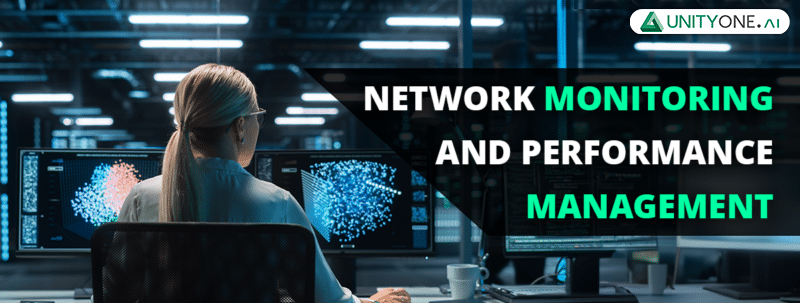Network Monitoring and Performance Management
Network Monitoring and Performance Management

Introduction
The Data Center Networks Market size is estimated at USD 26.12 billion in 2024, and is expected to reach USD 59.37 billion by 2029, growing at a CAGR of 17.85% during the forecast period (2024-2029).
The data center networking market encompasses a wide array of vendors, ranging from comprehensive “full stack” infrastructure providers to specialized networking experts, propelled by the widespread embrace of cloud computing. A significant shift in value is observed, transitioning from hardware to software, with a distinct emphasis on enhanced manageability and automation.
This blog will be a valuable resource for Infrastructure and Operations (I&O) leaders, aiding them in evaluating vendor’s capacity to meet current and future demands related to data center network monitoring and operations.
Business Challenge
In the ongoing digital transformation of enterprises, networks play a central role in delivering user experiences and facilitating business initiatives. Despite the predominant focus of Infrastructure and Operations (I&O) leaders on cloud computing, networking has often been overlooked.
As organizations increasingly utilize diverse cloud environments, there is a growing interest in Hybrid Multicloud networking. To enhance network performance, agility, and cost-effectiveness, I&O leaders should proactively embrace new monitoring tools and technologies, incorporate automation processes, and foster a cultural shift within their teams.
UnityOne Key Offering

Network Discovery: This feature allows UnityOne to automatically identify and map all devices and resources on the network, including servers, routers, switches, and end-user devices. Additionally, it provides valuable insights into the network’s topology, helping IT teams visualize how data flows across the infrastructure.
Network Fault Management: Provides a comprehensive solution for identifying, detecting, and managing faults or issues within the network. This feature continuously monitors the network for anomalies, errors, or failures and alerts network administrators in real-time when such cases occur. It helps organizations proactively address problems, reduce downtime, ensure smooth network operations, and improve the overall user experience.
Network Visualization: Offers graphical representations of your network, making it easy to visualize your network’s topology and the flow of data. This feature helps in identifying bottlenecks, points of failure, and areas that may need optimization.
Alerts and Notifications: The platform allows you to set up custom alerts and notifications based on performance thresholds. You can receive alerts via email or SMS when issues arise, helping you address problems promptly.
Historical Data Analysis: UnityOne stores historical performance data, enabling you to analyze trends and track network performance over time. This data can be invaluable in identifying recurring issues and planning for future network upgrades.
Network Traffic Management: UnityOne’s traffic management capabilities help organizations reduce congestion, improve network efficiency, and enhance the overall quality of service for end-users. By providing insights and control over network traffic, UnityOne empowers IT teams to make informed decisions that align with their business goals and ensure a smooth and responsive network experience.
UnityOne Benefits

Conclusion
UnityOne is a powerful network performance monitoring and management platform that can significantly enhance your organization’s network infrastructure.
Networking leaders within I&O should utilize this blog to establish a baseline for current capabilities and assess their future relevance. This blog also serves as a valuable resource for I&O networking leaders to strategically prioritize their investments and enhance the adoption of emerging network technologies.
To learn more about our services, reach out to us by clicking this link!


